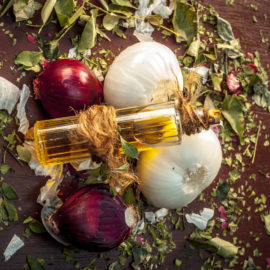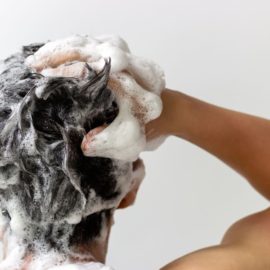Whenever the hair is exposed to the sun, UV light, chemicals, or hair treatments, hair color oxidation occurs. This can cause the hair to lighten and have a reddish undertone, which is a result of a loss of pigment in the hair shaft, which is in turn caused by the outer layer of the hairs haft peeling away.
This damage to the hair shaft releasing green color pigments and deposits red ones, which produces the discoloration. Hair color oxidation is of particular concern to those with colored hair, whose hair wellness is already compromised by chemical treatments.
While the industry has had no shortage of output in recent years to address hair wellness, consumers are willing to listen to new ideas to achieve this goal. According to TechNavio, a growth of over 3% is expected for the global hair care market, for which consumers are willing to pay more for innovative, scientific solutions.
However, at the same time, this growth coexists with a global trend towards sustainable, natural hair treatments. In light of the issue of hair color oxidation, brands need to combat a chemical reaction with natural ingredients to meet consumer demands for efficacy and sustainability. Here, we take a closer look at the potential natural products to fight hair color oxidation
Content
Natural and organic remedies: what consumers are demanding for hair color oxidation and beyond
More than ever, today’s consumers are basing their purchase decisions on brands that share their ideals and values, namely their concern for the environment. Thus, the beauty and hair care industry is facing new challenges to meet such demands, which can be summarized in two key trends:
- Treatments that include natural, ethically-sourced ingredients are leading the market, and so are brands that implement circular-economy initiatives. Consumers are pressing brands into using sustainable and natural ingredients. According to Grand View Research, in 2019 “rising awareness pertaining to the depletion of natural resources…is expected to drive the demand for eco-friendly solutions from leading manufacturers.”
- Consumers are looking for authentic and transparent brands, as shown by recent surveys that claim 44% of US millennials say that following environmentally friendly practices is one of the best ways for a brand or company to show that it represents their personal values.
Brands must face these challenges and respond in different ways: from experimenting with new minimal, sustainable packaging to applying transparency policies in their manufacturing processes. Beauty brands must also incorporate these benefits into their narrative, in order to match their clients’ aspirations and wishes. Using organic and natural products is an integral solution to these needs. However, these ingredients must also be ethically sourced, so that companies don’t contribute their share to the depletion of natural resources, and preferably certified as organic and natural.
How do you keep hair dye from oxidation? Natural and sustainable answers to hair color oxidation
Many hair care companies, including both multinational and indie brands, are providing answers to the new sustainability paradigm. In fact, by August 2019, 45% of the top 10 hair care ingredient claims worldwide included some reference to natural ingredients.
Always ahead of the curve, Provital developed Kerarice™. Regarding hair color oxidation specifically, Kerarice™ is a remarkably effective treatment, which concurrently adheres to the most rigorous sustainability standards. This active ingredient has been specifically designed to protect hair fibers from the oxidative damage generated by sun radiation – and here’s how.
In a study conducted by trichologists at the University of Estadual de Campinas in Brazil, they found that both UVB radiation and UVA radiation are the main responsible for the loss of hair proteins and changes in coloration that characterizes hair color oxidation. This data is particularly worrying since global warming is expected to provoke extreme weather, including more intense UVB radiation.
Kerarice provides an efficient treatment to this aggressor and hair color oxidation, while also playing its part in supporting a more sustainable beauty industry. This active ingredient is obtained from Oryza sativa L, a rice variety whose powerful antioxidant properties make it perfect for fighting hair color oxidation.
In fact, Kerarice is so rich in rice protein that, when applied to hair, it can perform a repairing action for hair fibers from the inside, as well as forming ionic bonds or hydrogen bonds with the hair and, therefore, acting as a repairing agent for hair cuticles.
As evidenced by in vivo tests, Kerarice is able to:
- Prevent hair protein degradation
- Strengthen hair and minimize hair rupture
- Protect hair fiber essential amino acids, such as tryptophan, against the aggression caused by radiation
- Protect hair fibers from solar aggression, decreasing the levels of peroxidized lipids.
- Recover hair brightness, diminished by solar radiation
- Reduce color variation caused by UVB rays
Harnessing the power of rice for hair color oxidation, sustainably
When it’s time to consider ethical and sustainable issues, companies must take into account that half of the world’s population uses rice as the basic ingredient for their diet. Thus, employing this ingredient for non-feeding purposes can potentially interfere with economies and ecosystems: as the demand for rice grows, so does its price.
In order to ensure the highest sustainability and ethical standards are applied, Provital makes Kerarice by using the waste products resulting from refining the grains of this species of rice. This becomes a sustainable practice as it doesn’t interfere with rice’s dietary use, while also contributing to the circular economy.
Therefore, Kerarice™ is somewhat of a silver bullet when it comes to addressing hair color oxidation issues with a natural solution, while facilitating full ingredient transparency and meaningful sustainability. Consumers want hair products that work, and they want hair products that care. With the power of responsibly-sourced rice proteins, hair care brands can meet consumer demands from every angle.
No comments yet
There are no comments on this post yet.





Leave a comment